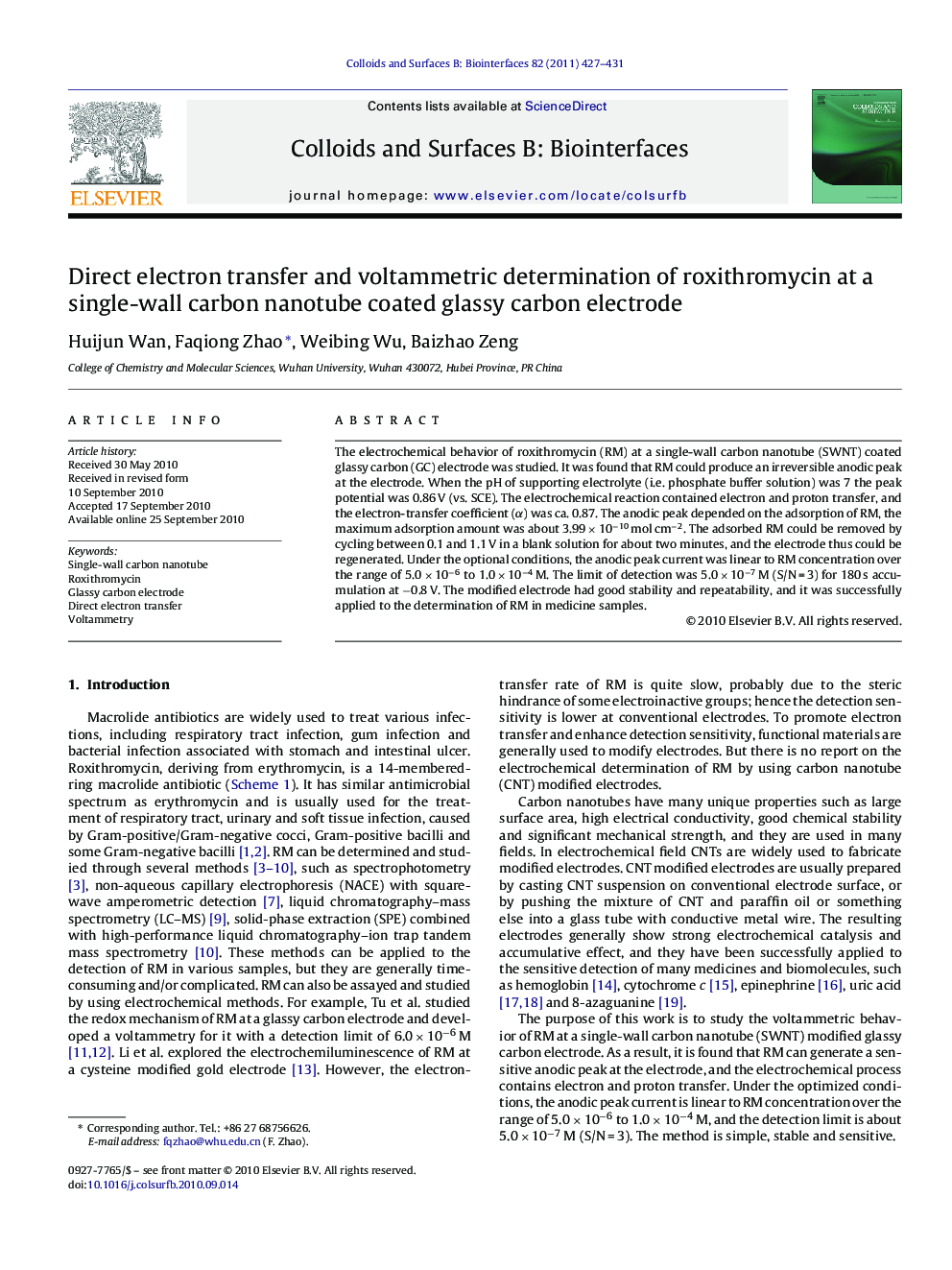| Article ID | Journal | Published Year | Pages | File Type |
|---|---|---|---|---|
| 601332 | Colloids and Surfaces B: Biointerfaces | 2011 | 5 Pages |
The electrochemical behavior of roxithromycin (RM) at a single-wall carbon nanotube (SWNT) coated glassy carbon (GC) electrode was studied. It was found that RM could produce an irreversible anodic peak at the electrode. When the pH of supporting electrolyte (i.e. phosphate buffer solution) was 7 the peak potential was 0.86 V (vs. SCE). The electrochemical reaction contained electron and proton transfer, and the electron-transfer coefficient (α) was ca. 0.87. The anodic peak depended on the adsorption of RM, the maximum adsorption amount was about 3.99 × 10−10 mol cm−2. The adsorbed RM could be removed by cycling between 0.1 and 1.1 V in a blank solution for about two minutes, and the electrode thus could be regenerated. Under the optional conditions, the anodic peak current was linear to RM concentration over the range of 5.0 × 10−6 to 1.0 × 10−4 M. The limit of detection was 5.0 × 10−7 M (S/N = 3) for 180 s accumulation at −0.8 V. The modified electrode had good stability and repeatability, and it was successfully applied to the determination of RM in medicine samples.
